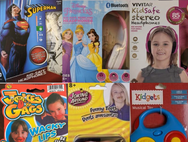
Campaign for Healthier Solutions
Resources about Toxic Chemicals
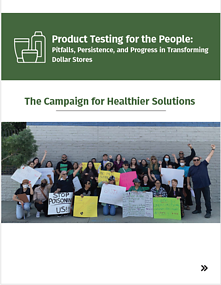
2025 Dollar Store Product Testing For the People
New community-driven testing finds chemicals and materials of concern in dollar store products.
Highlighted products of concern purchased at Dollar Tree/Family Dollar and/or Dollar General include: “Baby Shark” baby lotion containing a formaldehyde-releasing chemical; daily moisturizer containing a chemical banned in European cosmetics; light-up children’s bracelets, plastic roses and mini candy pails containing lead; children’s products made with polyvinyl chloride or PVC, and receipts containing bisphenol-S. In positive news, the report also includes new test results suggesting that microwaveable popcorn packaging sold at dollar stores is now free of PFAS (perfluoroalkyl and polyfluoroalkyl substances). F
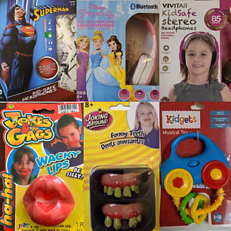 Toxic Chemicals Found in Dollar Store Products
Toxic Chemicals Found in Dollar Store Products
A 2022 product screening report released by the Campaign for Healthier Solutions and Ecology Center found that over 50% of items purchased at major dollar stores in 2021 contained chemicals of concern. Notably, many of these items included toys and other products marketed to children that were found to contain lead, PVC and phthalates.
Read more about our product testing in the Guardian, NPR, and Grist.
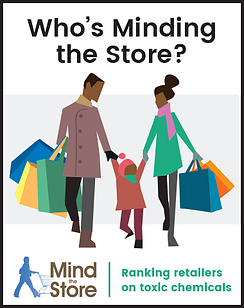 Retailer Report Card
Retailer Report Card
The Retailer Report Card is a report by the Mind the Store Campaign that addresses major U.S. retailers and their actions to eliminate toxic chemicals. The 2024 Retailer Report Card establishes, for the first time, an enhanced grading system called The Four Essential Elements for a Safer Marketplace. The four elements include: Corporate Commitment, Transparency, Ban the Bad, and Safer Solutions.
-
- Dollar Tree earned a D. The company has a chemical policy, and expanded it to include more restricted substances in recent years. Dollar Tree participates in the Chemical Footprint Proejct, but does not disclose its chemical footprint publicly.
- Dollar General earned D+. Although the company has a chemical policy, it only applies to a limited number of private-label products. Dollar General participates in the Chemical Footprint Project, but does not disclose its chemical footprint publicly.
 Lowering the Levels: A Healthy Baby Food Initiative
Lowering the Levels: A Healthy Baby Food Initiative
Read: What's in My Baby's Food? Our report on packaged baby food from various brands and retailers found that 95% of tested products contained at least 1 heavy metal that are linked to lower IQs.
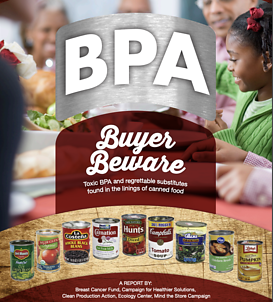
Read: Toxic BPA and regrettable substitutes found in the linings of canned food. Bisphenol A (BPA) is a toxic, endocrine-disrupting chemical that negatively impacts our hormonal systems, contributing to a host of harmful health effects. Hundreds of scientific studies have linked extremely small amounts of BPA, measured in parts per billion and even parts per trillion, to an increased risk of breast and prostate cancer, infertility, type-2 diabetes, obesity, asthma, and behavioral changes including attention deficit disorder. In this report, canned food from national food brands was collected in 19 states for testing. 67 percent of the cans tested (129 out of 192) contained BPA-based epoxy in the body and/or the lid.
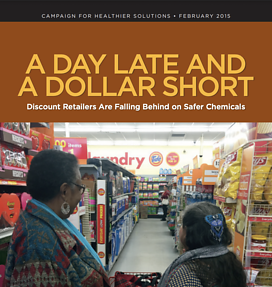 A Day Late and a Dollar Short
A Day Late and a Dollar Short
Read: Discount Retailers Are Falling Behind on Safer Chemicals. In 2015, we tested 164 products purchased at the four largest dollar store chains (Dollar General, Dollar Tree, Family Dollar, and 99 Cents Only) in six states. 81% of the products tested (133 of 164) contained at least one hazardous chemical above levels of concern, including lead and other hazardous metals, phthalates, and polyvinyl chloride plastic (PVC). Low-income communities and communities of color rely on dollar stores for staples, and are already disproportionately exposed to harmful chemicals. We argue that this places a higher level of responsibility on dollar stores to ensure they are not selling toxic products.





